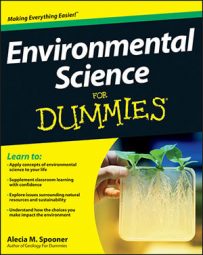Here is the lowdown on these fuels and a couple of lesser-known petroleum-related resources, and what the possible ecological effects and advantages of extracting them are.
What you know as oil is actually called petroleum or crude oil and may exist as a combination of liquid, gas, and sticky, tar-like substances. Petroleum sources are usually small pockets of liquid or gas trapped within rock layers deep underground (often under the seafloor). Extracted crude oil is refined and used to manufacture gasoline (used in transportation) and petrochemicals (used in the production of plastics, pharmaceuticals, and cleaning products).
Like other resources, oil isn’t evenly distributed across the globe. The top oil-producing countries are Saudi Arabia, Russia, the United States, Iran, China, Canada, and Mexico. Together, these countries produce more than half of the total oil resources in the world.
While some petroleum is found in gas form, the most common natural gas is methane. Methane usually occurs in small amounts with petroleum deposits and is often extracted at the same time as the petroleum. Natural gas can be found in certain rock layers, trapped in the tiny spaces in sedimentary rocks.
Drilling for oil
Oil companies pump liquid oil out of the ground by using drilling rigs and wells that access the pockets of oil resources. The oil fills the rock layers the way water fills a sponge — spreading throughout open spaces — instead of existing as a giant pool of liquid.
This arrangement means that to pump out all the oil, drillers have to extend or relocate the wells after the immediate area has been emptied. Oil drilling rigs set on platforms in the ocean to access oil reserves below the seafloor must therefore employ a series of more technically complex drill rigs built to access oil reserves in deeper water.
The figure illustrates some of the most commonly used ocean drilling rigs and platforms and the water depths they’re most suited for.
![[Credit: Illustration by Lisa Reed]](https://www.dummies.com/wp-content/uploads/338287.image0.jpg)
Oil is a cleaner fuel than coal, but it still has many disadvantages, such as the following:
Refining petroleum creates air pollution. Transforming crude oil into petrochemicals releases toxins into the atmosphere that are dangerous for human and ecosystem health.
Burning gasoline releases CO2. Although oil doesn’t produce the same amount of CO2 that coal burning does, it still contributes greenhouse gases to the atmosphere and increases global warming.
Oil spills cause great environmental damage. Large oil spills sometimes occur during drilling, transport, and use, which of course affects the surrounding environment. But these spills aren’t the only risk.
Although large oil spills with catastrophic environmental effects — such as the 1989 Exxon Valdez in Alaska or the 2010 BP Deepwater Horizon in the Gulf of Mexico — get the most media coverage, most of the oil spilled into ecosystems is actually from oil that leaks from cars, airplanes, and boats, as well as illegal dumping.
Fracking for natural gas
Natural gas is a relatively clean-burning fuel source — it produces approximately half the CO2 emissions that coal burning produces — so demand for natural gas has increased in the last few decades as concerns grow about carbon emissions and global warming.
Now fuel producers are exploring natural gas in reservoirs separate from petroleum as sources of this fuel. To release the gas from the rocks and capture it for use as fuel, companies use a method of hydraulic fracturing, or fracking.
Fracking for natural gas requires injecting a liquid mix of chemicals, sand, and water into the gas-bearing rock at super high pressures — high enough to crack open the rock, releasing trapped gases. The gas is then pumped out of the rock along with the contaminated water. The sand and chemicals are left behind in the rock fractures, leading to groundwater pollution and potentially less stable bedrock.
Currently scientists are concerned that earthquakes in regions of the Midwestern U.S. that have never experienced earthquakes before are the result of wastewater from natural gas fracking operations.
Unconventional petroleum resources
Although oil and natural gas are the most common petroleum resources, other similar, lesser-known resources are available:
Tar sands: In some parts of the world (such as Canada and Venezuela), large deposits of sand are mixed with tar or bitumen, a sticky hydrocarbon substance. Although the tar sand resources are vast in these regions, they have high environmental costs, such as the habitat destruction required to extract them and the production of greenhouse gases and toxic waste in the refinery process.
Oil shales: Oil shales are sedimentary rocks that contain kerogen, an oil-like substance. The current process for extracting the oil from these rocks involves using and polluting large amounts of water. So far, researchers haven’t found an environmentally safe and economically reasonable way to access these fossil fuel resources, but research continues.

